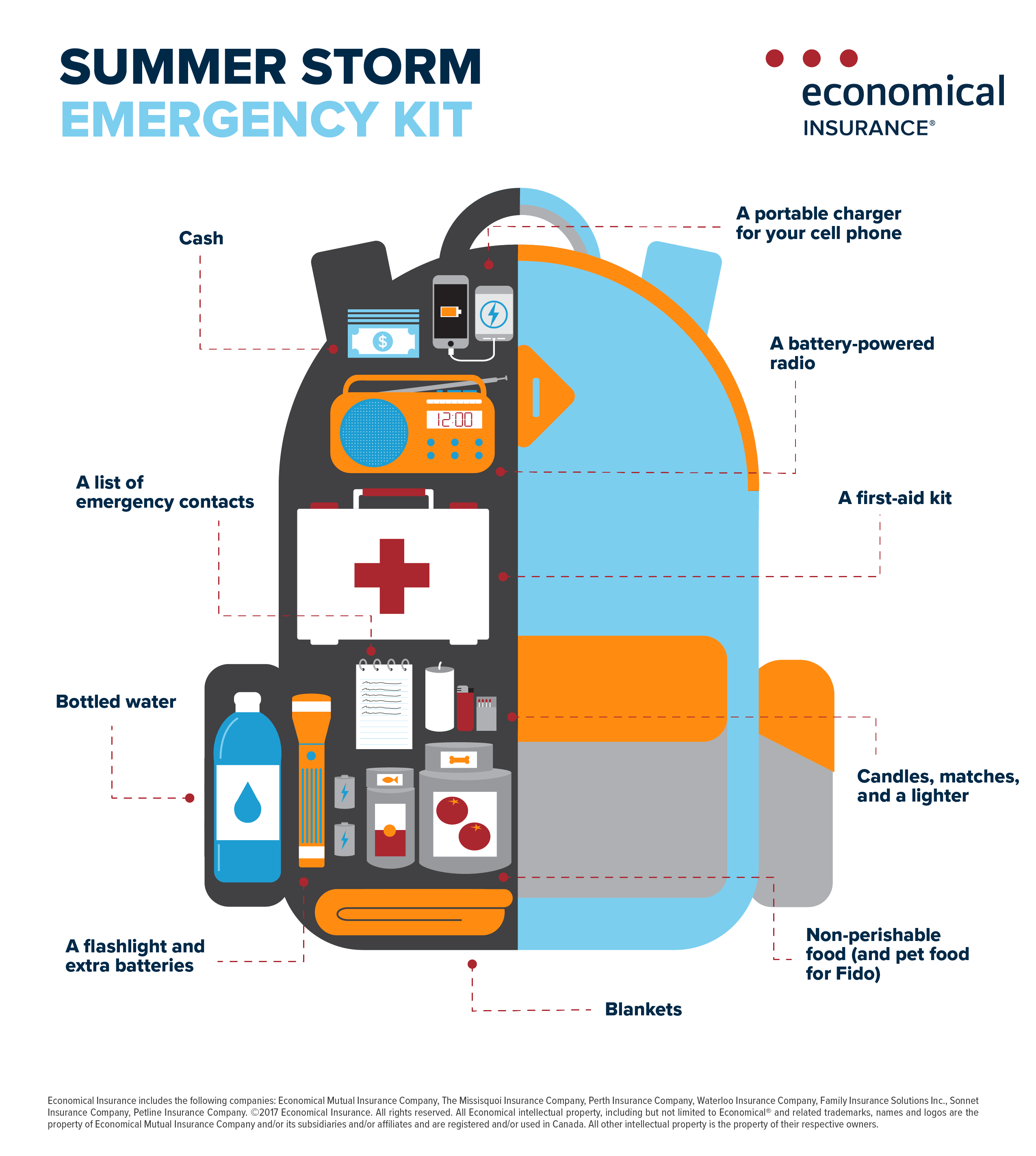What to do before, during, and after a tornado
Written by Stephanie Fereiro | Published on: August 1, 2017 | Updated on: May 3, 2023 | Categories: Home insurance
Did you know that (after the United States) Canada gets more tornadoes than any other country in the world? Much more powerful than your typical thunderstorm, a tornado can cause significant damage to your home and property. As the frequency of severe weather rises across the country, it's wise to be aware of the potential dangers of a tornado and know how to prepare. You can help protect your space and your family from a tornado by following these simple steps before, during, and after the storm.
How to prepare before a tornado
Tornado season generally spans from May through September in Canada. These simple tips can help you prepare for a tornado emergency:
- Keep your eye on the weather. Summer storms can come on suddenly, so it's important to stay alert. Environment Canada is responsible for warning Canadians about extreme weather events through local radio stations and weather channels. If it's easier for you to monitor your phone, consider downloading an app that sends out alerts (like WeatherCAN or The Weather Network, for example).
- Prepare your yard. Staying on top of basic maintenance in your yard can help prevent damage in the event of a storm — so keep trees and shrubs free of weak or dead branches, and consider replacing gravel or stone with mulch or shredded bark (dead branches and gravel could cause damage if blown by the wind). If you know a storm is on the way, move any patio furniture or planters into your shed or garage, as they could be picked up by the wind and blown into your windows.
- Know the signs. A funnel-shaped cloud that extends towards the ground is perhaps the most known sign, but pay attention to these other cues that could warn you of a nearby tornado:
- Dark, green- or yellow-ish sky
- A loud, continuous, train-like roaring sound
- Dust and debris falling from the sky
- A severe thunderstorm
- A "wall" of dark clouds
- Large hail
- Plan for a power outage. In the event of a storm, your power may cut out, so it's always a good idea to keep a well-stocked emergency kit on hand and store it where you can easily find it in the dark. You'll want to have access to at least three days' worth of supplies for each member of your household (including pets) in case you're unable to leave your home.
Wondering what to keep in your emergency kit? Check these items off your list:

Summer storm emergency kit
- A portable charger for your cell phone
- Cash
- A battery-powered radio
- A list of emergency contacts
- A first aid kit
- Bottled water
- Candles, matches, and a lighter
- A flashlight and extra batteries
- Blankets
- Non-perishable food (and pet food for Fido)
How to stay safe during a tornado
Once a tornado has arrived, there are a few things you can do to keep your loved ones safe until it passes.
- Take shelter and steer clear of windows. Stay indoors and head to the basement (or to a small main-floor room like a bathroom or closet, if you can't get to the basement). Once you're there, get as close to the ground as you can, and stay as far away from windows as possible.
- Get off the road (or out of your mobile home). If you're driving when the tornado hits, get into the nearest building as quickly as you can. If you live in a mobile home, find shelter in a permanent building with a solid foundation. If there's no building nearby, consider taking cover in a low-lying area like a ditch, away from trees or other objects that could be blown towards you.
- Protect your noggin. Wherever you are, watch for flying debris and keep your head covered. If possible, consider sitting under a piece of sturdy furniture like a heavy table or desk, or use your arms to protect your head and neck — better yet, have your family put on bike helmets if they're close at hand.
What to do after the tornado has passed
Tornadoes usually hit in the afternoon or early evening, and most don't last longer than 10 minutes. Once you think the storm has passed:
- Tune into the weather channel. Check the local weather station to find out if your area is at risk for another tornado. If another storm is on its way, prepare to take cover once again. Listen for special alerts from local authorities, which may tell you what to do next.
- Determine the damage. Carefully make your way through your home, checking that furniture and items on shelves are securely in place. Once you've checked for any noticeable damage indoors, consider heading outside to inspect your yard. If you see any damaged power lines, stay away from them and contact your hydro company.
- Contact your group's broker. If your home has been damaged in any way, reach out to your group's licensed home insurance broker. Your group's broker can communicate with your insurance company and help you arrange to get repairs underway as quickly as possible. Depending on your policy, your Additional Living Expenses coverage may come into play and help cover out-of-pocket expenses if you need to live elsewhere while your home is being repaired.
Tornadoes and other severe weather events are becoming more common across Canada. Along with preparing your home and family for a potential emergency, learn how climate change may affect your home insurance needs and whether you have the right coverage to protect your property.
Share these tips on Facebook or Twitter to help your neighbours stay safe this tornado season, too.